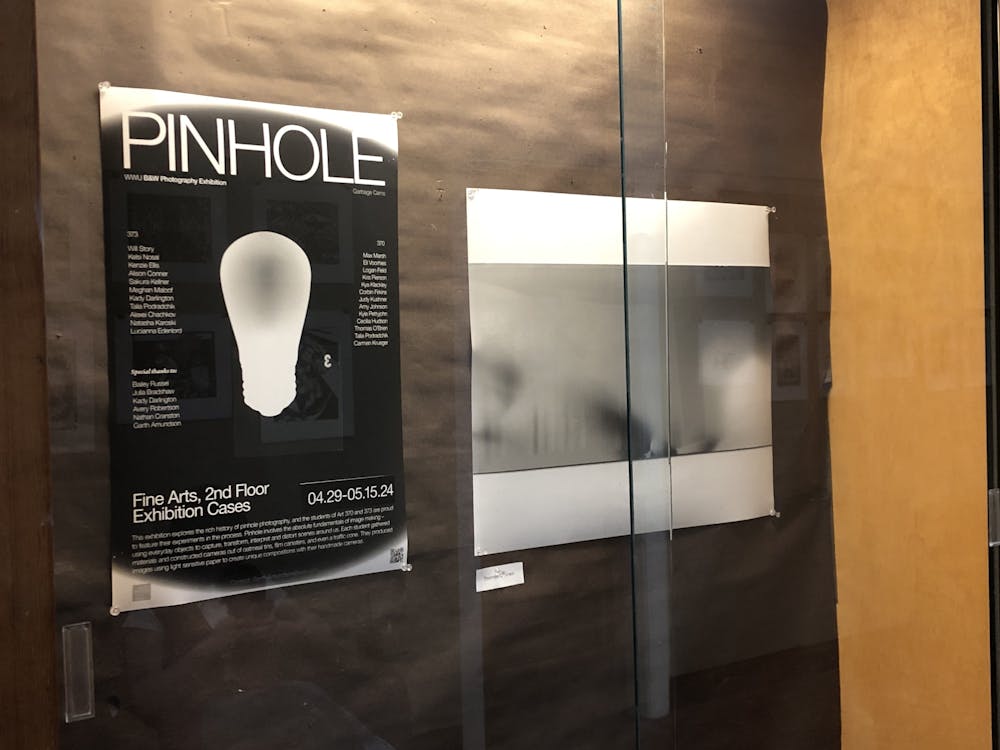One man’s trash was another’s treasure at Western Washington University’s “Pinhole” photography exhibit. The exhibition highlighted student work from Western's black and white photography and photography alternative processes classes. Photos and materials were on display from April 29 to May 15.
“I think you can make something out of anything,” Talia Podrachik said, a student exhibitor. “It’s nice to see [the students in the class] as a team, and all we’ve done and how it all varies. It looks great and I just love it.”
Garth Amundson, the professor of both classes featured in the exhibition, has made an effort to feature student work wherever he can.
“I’ve made a huge effort to exhibit student work in as many different locations as possible,” Amundson said. “This includes exhibitions in the WWU library, Carver Gym, biology building, downtown Bellingham and several exhibitions in Seattle. After all, what is the point of making art if there’s not an audience to enjoy it? Making art is only the first step, getting people to look at it completes the work.”

Displays of multiple students' photography in the Fine Arts Building at Western Washington University in Bellingham, Wash., on May 13, 2024. The "Pinhole" exhibit highlights students' work of capturing photos using recycled materials. // Photo by Julia Hawkins
Pinhole photography is linked to the creation of the camera obscura and the common camera used today, according to Amundson.
“Pinhole photography has a long rich history and is a great way to introduce students to analog photography,” Amundson said. “In this context, the introductory class was able to understand the construction of an image while the advanced class was able to push conceptual research surrounding the relationships between camera and image.”
To create a pinhole for this project, students used containers such as Pringles cans and old boxes and covered them in black tape on the inside and outside. A photo could then be taken through a small hole, said Podrachik.
“It’s so cool that we could take random recycled materials and make images out of them,” said Podrachik. “All of these are cool, they have a haunting look to them in some way.”
According to Podrachik, the hardest part of this project was what made it unique: the recycled materials. Developing film through recycled material was a learning process that proved frustrating.

The recycled materials that were used by students to create the "Pinhole" exhibit displayed at the Fine Arts Building at Western Washington University in Bellingham, Wash., on May 13, 2024. The "Pinhole" exhibit highlights students' work of capturing photos using recycled materials. // Photo by Julia Hawkins
Students are passionate about what they do, said Dr. Christopher Bianco, the dean of the Fine and Performing Arts College. “It is not as easy to get work out there, we are lucky here as musicians, artists and photographers that those outward displays of art are worked into the curriculum.”
“We often get trapped in our fields of study and silos, so to have students, staff, faculty and the community visit the art department is the ultimate goal,” Amundson said.
If students don’t know about the art on campus, the hope is that they’re surprised about the amount of talent that exists here. The goal is to promote a level of equality for all students because they are talented and deserve to be seen, said Bianco.
“It’s hard to get out there, there's such a variety of things that people are good at and so much talent and they're more niche,” said Podrachik. “There's so many cool things that no one would see otherwise, and even if it is for a project, you can see their individual style. It's all a creating and learning process for everyone.”
More about the recent "Pinhole" exhibit and upcoming showings can be found here.
Julia Hawkins (she/her) is a campus news reporter for The Front this quarter. She is a second-year journalism/public relations major. Outside of reporting, Julia enjoys hanging out in The Planet office, baking and asking random people to pet their dogs. You can reach her at juliahawkins.thefront@gmail.com






